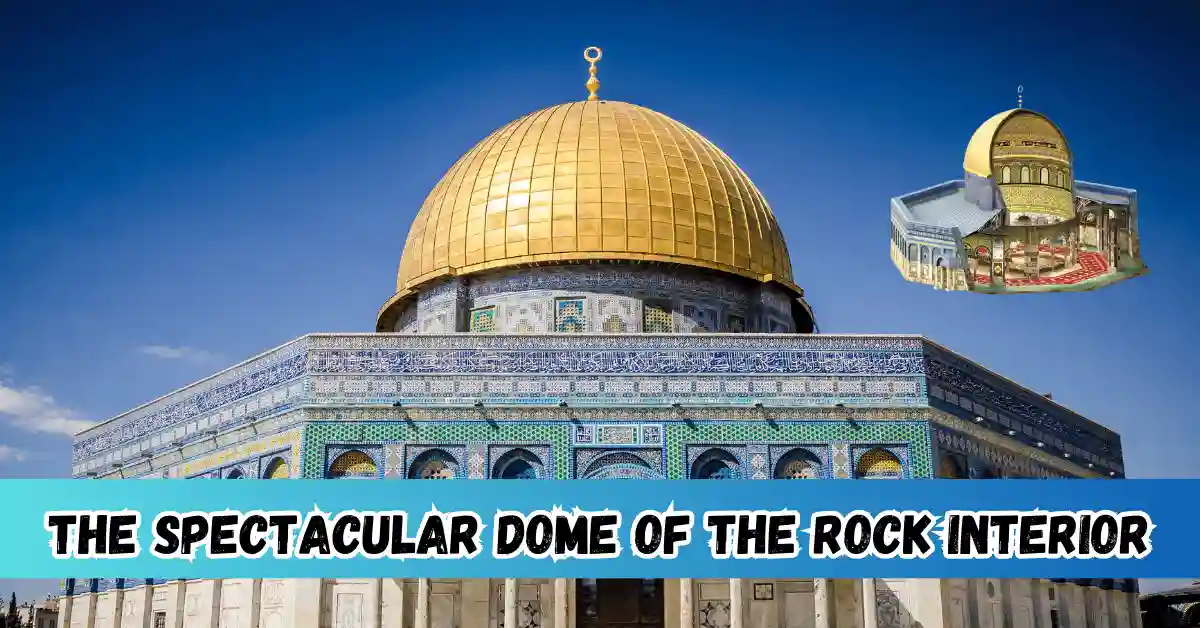The Dome of the Rock interior is a treasure trove of history, architecture, and spirituality, nestled in the heart of Jerusalem’s Old City. As one of the most recognizable landmarks in the world, this magnificent structure has been a source of fascination for centuries, attracting millions of visitors and pilgrims from around the globe.
In this article, we will delve into the rich history, stunning architecture, and profound significance of the Dome of the Rock interior, providing an immersive experience that will leave you in awe.
The Historical Significance of the Dome of the Rock
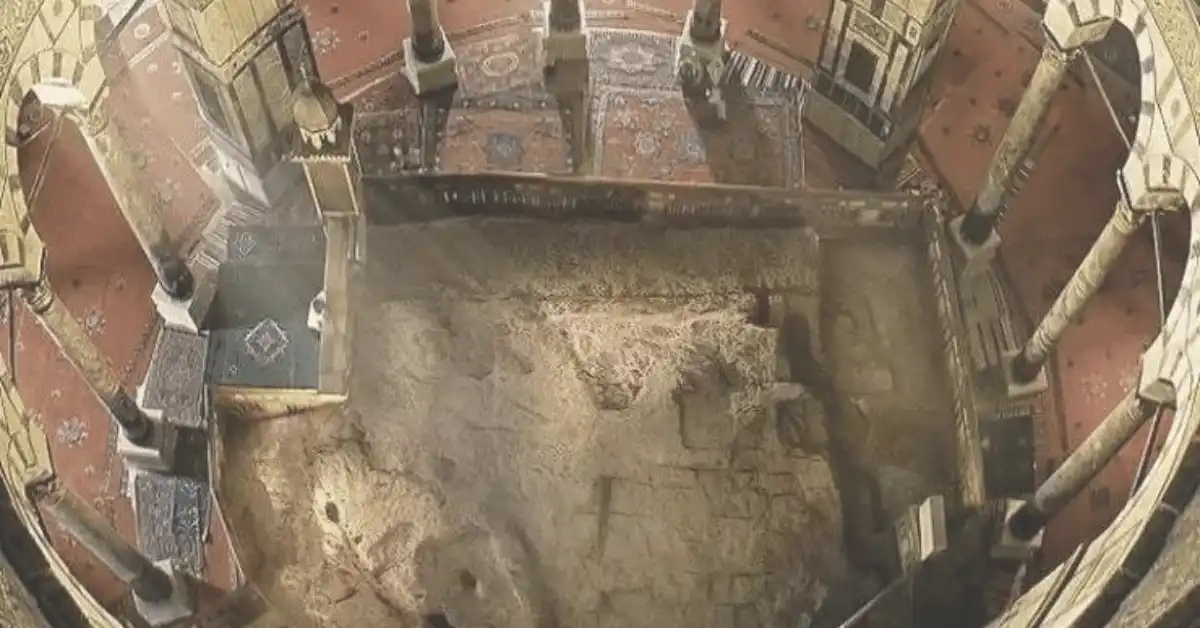
The Dome of the Rock, also known as Qubbat As-Sakhrah, was built in 691 CE by the Umayyad Caliph Abd al-Malik ibn Marwan. This magnificent structure was constructed over a rocky outcrop, believed to be the site where the Prophet Muhammad ascended to heaven during his Night Journey. The Dome of the Rock is considered one of the oldest and most important Islamic monuments in the world, and its interior is a testament to the ingenuity and craftsmanship of the Umayyad architects.
It is the third holiest site in Islam after Mecca and Medina. The site is sacred to Muslims, Jews, and Christians alike, as it is believed to be the location where Prophet Muhammad ascended to heaven during the Night Journey (Isra and Mi’raj).

Architectural Beauty of the Dome of the Rock Interior
The Sacred Rock (Foundation Stone)
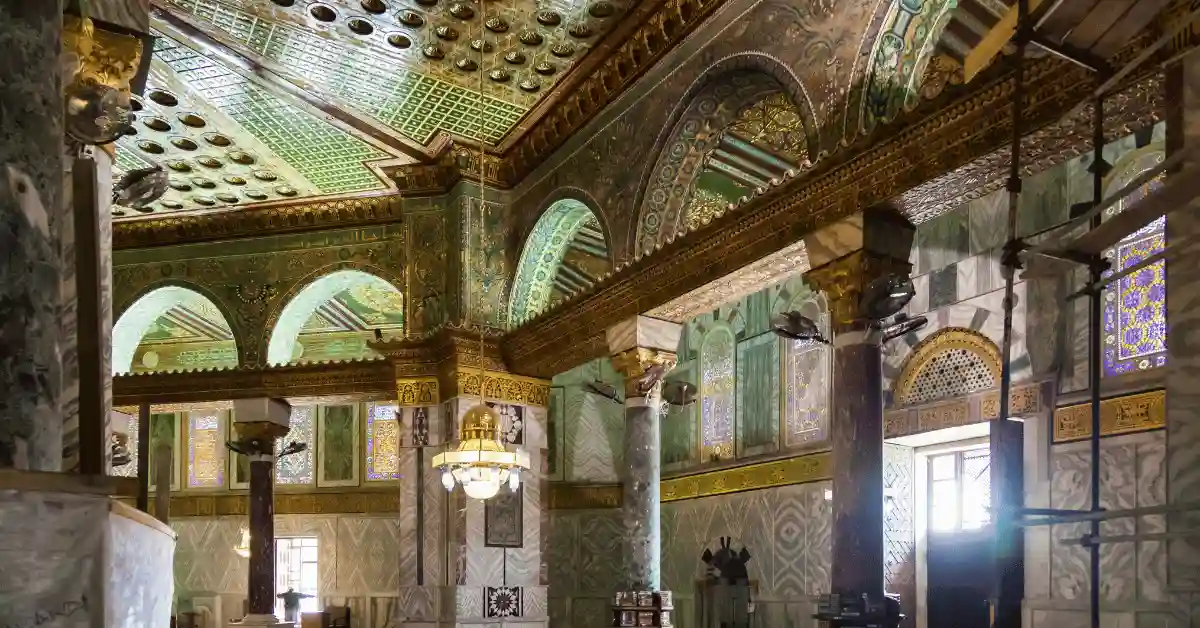
At the heart of the Dome of the Rock’s interior lies the sacred rock, known as the Foundation Stone. This rock is central to the religious significance of the structure. It is revered as the spot from which Prophet Muhammad ascended to the heavens and is also significant in Jewish tradition, as it is believed to be where Abraham prepared to sacrifice his son Isaac. The sacred rock sits beneath the intricate dome, which shelters it from above.
Intricate Mosaics and Tilework
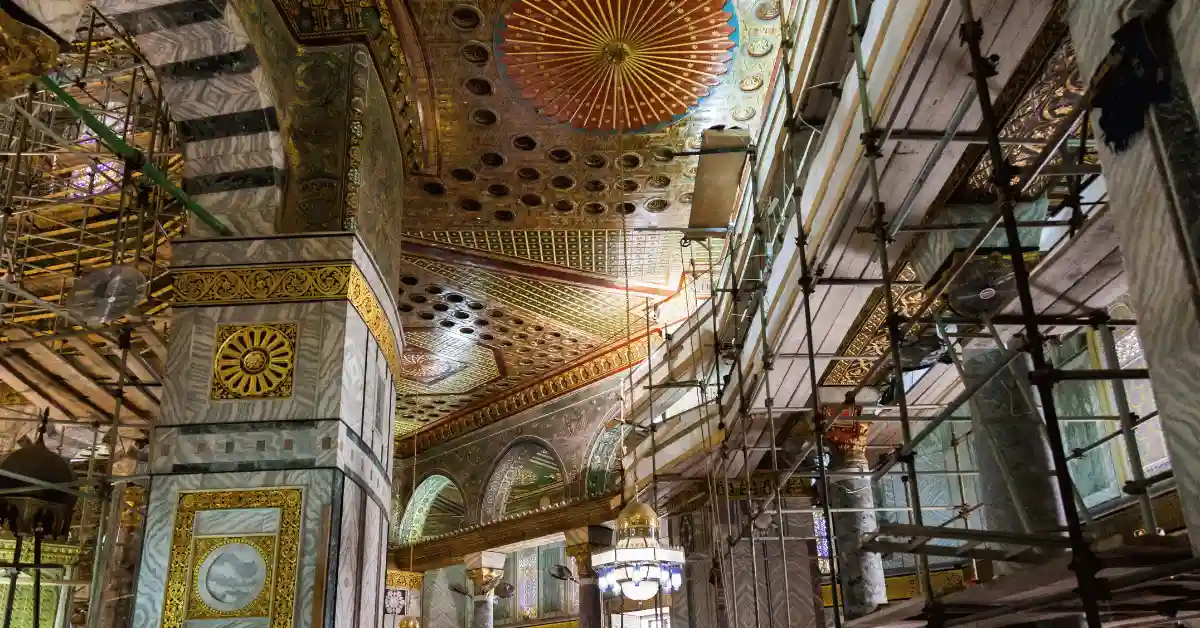
One of the most remarkable aspects of the Dome of the Rock’s interior is its use of vibrant mosaics and tilework. These mosaics are not only decorative but are laden with spiritual meaning. The mosaics depict intricate designs, Arabic calligraphy, and geometric patterns—elements often associated with Islamic art and architecture. The gold, blue, and green hues dominate the color scheme, creating a visual spectacle that is both serene and awe-inspiring.
- Mosaic Materials:
- Glass
- Stone
- Gold leaf
- Colored tiles
- Geometric Patterns:
- Stars
- Interlocking shapes
- Arabesque designs
Marble and Calligraphy
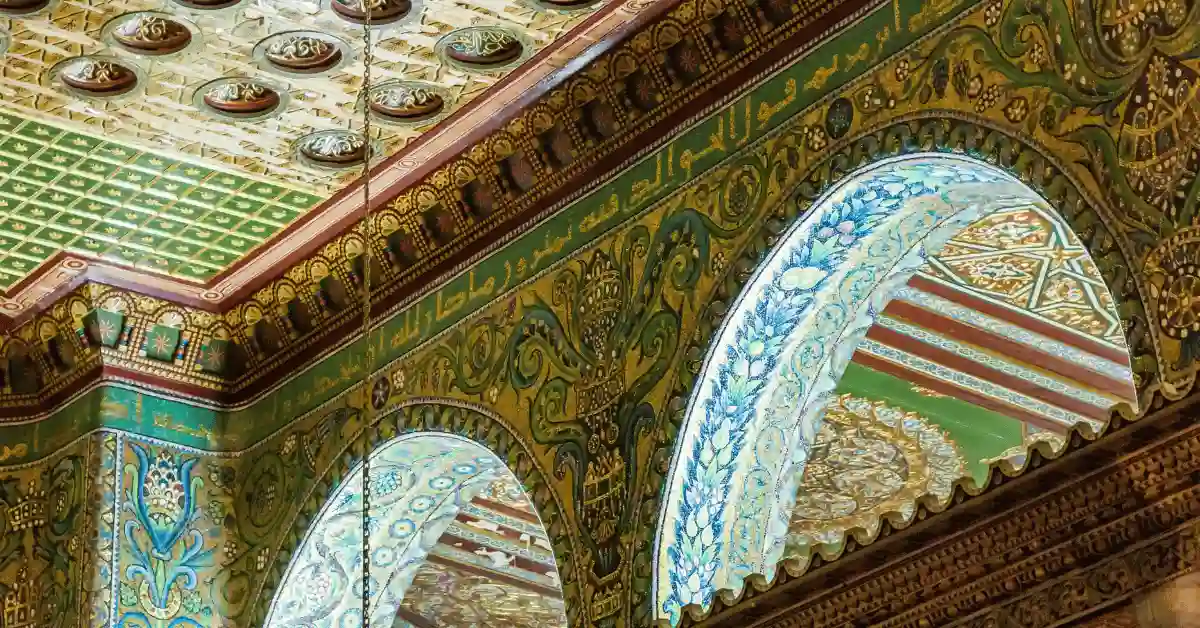
The walls inside the Dome of the Rock are lined with elegant marble slabs that are intricately designed to complement the overall aesthetic of the space. In addition, Arabic calligraphy adorns the walls, featuring verses from the Quran. This marriage of text and art is a hallmark of Islamic architecture and is meant to enhance the spiritual ambiance within the shrine.
- Calligraphy Details:
- Features Quranic inscriptions
- Written in Kufic script
- Adds a divine layer to the interior’s visual experience
The Dome Itself: A Symbol of Heaven
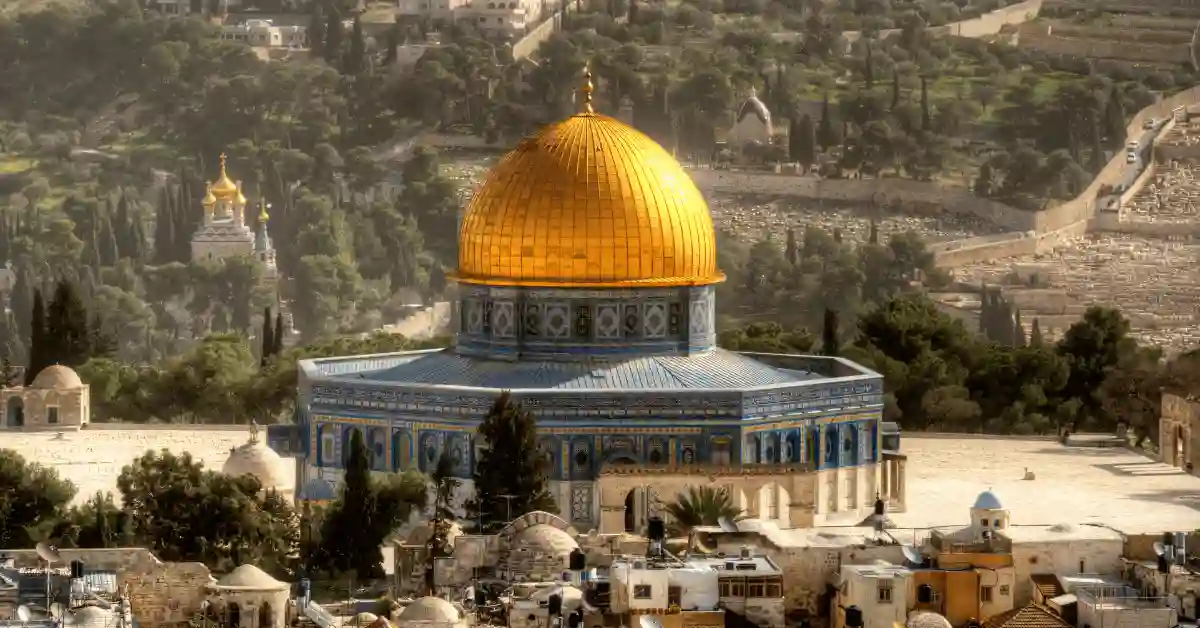
The golden dome that crowns the structure is an architectural masterpiece in itself. Inside the dome, visitors can gaze upon its elaborate interior adorned with celestial designs. These decorations symbolize the heavens, drawing a connection between the earth and the divine. The dome is supported by a circular arcade of arches, which are also decorated with intricate patterns and inscriptions.
- Dome Features:
- 20 meters in diameter
- Elaborate ceiling designs
- Symbolic of the celestial heavens
Religious and Cultural Significance

The Dome of the Rock interior holds immense religious importance for Muslims. It is a place of pilgrimage and prayer, and many believe that visiting the shrine brings them closer to God. The site is also a symbol of Islamic unity and architectural prowess. For centuries, it has stood as a testament to the glory of Islamic civilization.
- Religious Functions:
- Place of prayer for Muslims
- Pilgrimage destination
- Symbol of Islamic unity
Semantically Related Keywords
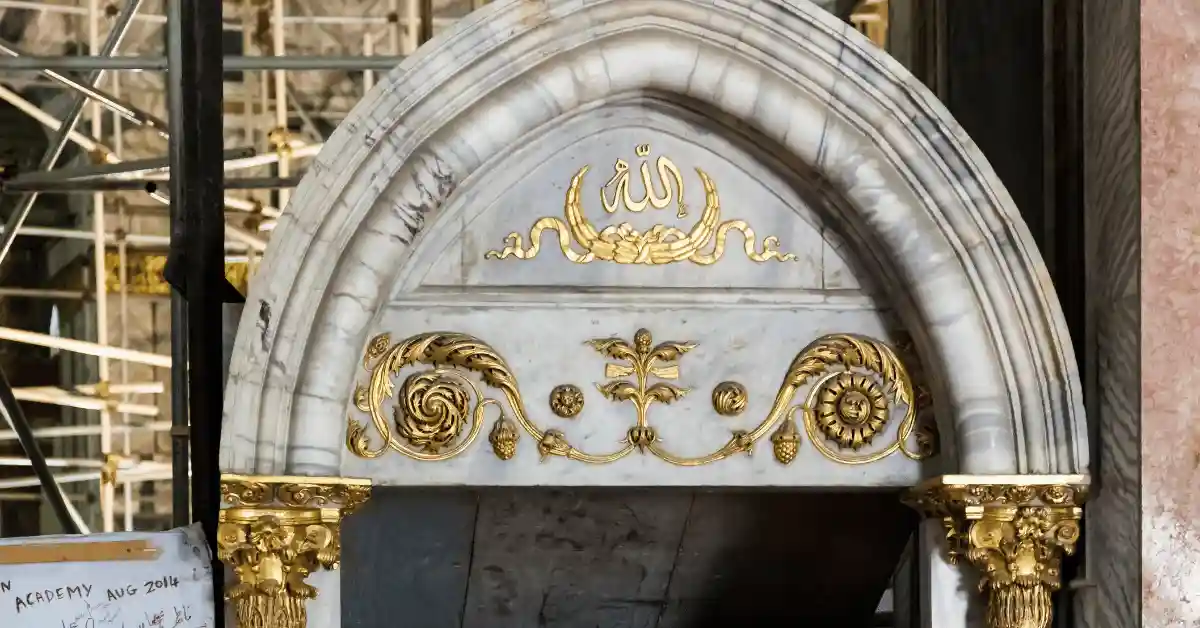
When discussing the Dome of the Rock, several semantically related topics come into play, including Islamic architecture, Jerusalem landmarks, religious pilgrimages, and Quranic calligraphy. These terms help provide context to the overall significance of the site.
Conclusion
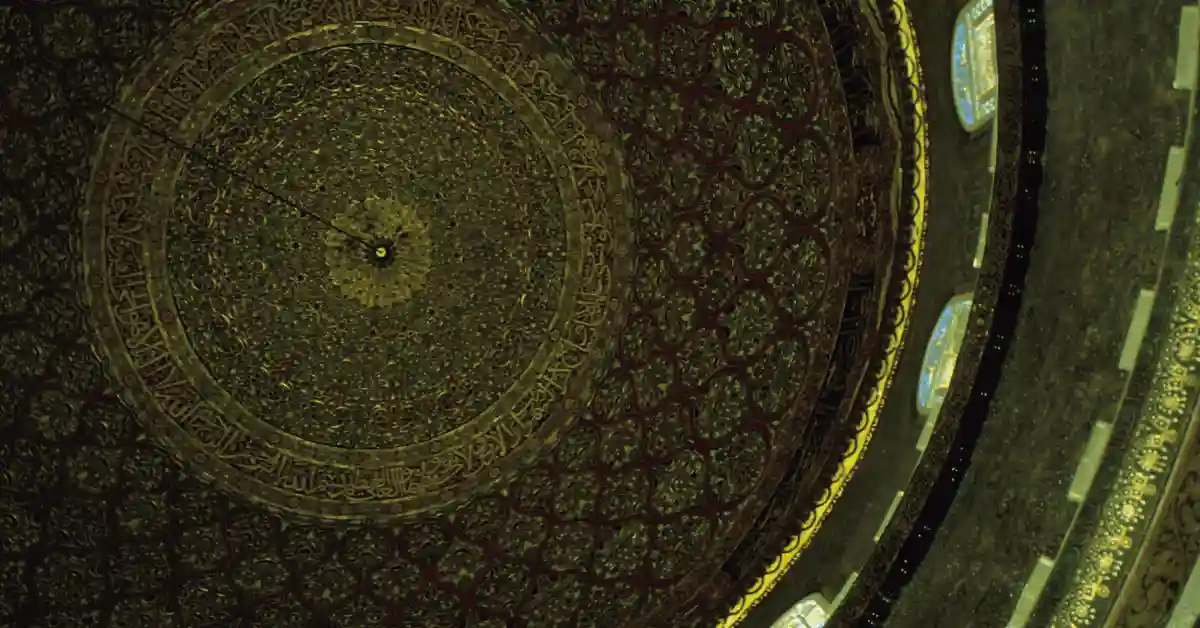
The Dome of the Rock interior is a masterpiece of Islamic architecture, blending religious significance with architectural innovation. Whether it’s the sacred rock, the intricate mosaics, or the celestial dome, every aspect of the shrine’s interior reflects the spiritual and cultural richness of the Islamic world. For those seeking to understand the history and artistry behind one of Jerusalem’s most iconic landmarks, exploring the Dome of the Rock is a must.
Frequently Asked Questions (FAQs)
What is the significance of the Dome of the Rock in Islam?
The Dome of the Rock is considered the third holiest site in Islam, after the Kaaba in Mecca and the Prophet’s Mosque in Medina. It is believed to be the site where the Prophet Muhammad ascended to heaven during his Night Journey.
What is the Dome of the Rock famous for?
The Dome of the Rock is famous for being one of the most significant religious monuments in Islam. It is revered as the site where Prophet Muhammad ascended to heaven and is also notable for its stunning interior design, including mosaics, calligraphy, and the sacred Foundation Stone.
Can non-Muslims enter the Dome of the Rock?
While non-Muslims are allowed to visit the Temple Mount area, entry into the Dome of the Rock itself is restricted to Muslims. However, non-Muslims can admire the architectural beauty of the shrine from the outside and explore the surrounding complex.
What materials are used in the interior of the Dome of the Rock?
The interior of the Dome of the Rock features a combination of mosaics, marble, tilework, and calligraphy. The mosaics are crafted from glass, stone, and gold leaf, creating a visually striking design.
Why is the Foundation Stone important?
The Foundation Stone is significant because it is believed to be the site where Prophet Muhammad ascended to heaven during the Night Journey. In Jewish tradition, it is also regarded as the location where Abraham was prepared to sacrifice his son, making it a shared religious site.
How old is the Dome of the Rock?
The Dome of the Rock was completed in 692 AD, making it over 1,300 years old. It is one of the oldest surviving Islamic monuments in the world.
What is the best time to visit the Dome of the Rock?
The best time to visit the Dome of the Rock is early in the morning or late in the afternoon, when the crowds are smaller and the lighting is more favorable for photography.
See from us more:
